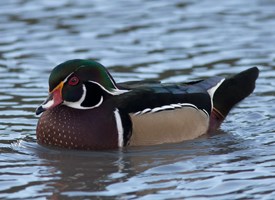
Anyone who has stepped outside during summer in California has no doubt seen the signs of the great success of the garden snail. Whether you see its slime trails, or its shells, the snail itself or just its squashed remains, it is clear that this scourge of gardeners everywhere is not going away anytime soon. However, it may surprise you to learn that this wasn't always the case, at least not until 1850.
The garden snail, Cornu aspersum (or Helix aspersa), is also known as the European garden snail for good reason. Originating in the Mediterranean region, the snail has since moved and thrived throughout the world with the help of Humans. Although sometimes transported by humans by accident, more often it was transported to different parts of the world to be eaten as a delicacy known as escargot. This was the case for California, as well as other parts of North America, and once the snails arrived here, they thrived.
If you are having trouble finding snails in your area, it because snails are mostly nocturnal, but do come out during the day sometimes, especially after a rainstorm. If you ever just really want to find cool snails and their slug cousins, you can find them hiding during the day in damp soils, usually beneath rocks. However, even if you don't see them around, they leave tell-tale signs of there presence in the form of destroyed greenery and slime trails. Snail's are well known for their mucus making abilities, and they should be! Although they don't make as much as some other animals (I'm looking at you hagfish) slime is vitally important to the snail's life style. When you only have one muscular foot to get you around, anything that can the make the ground a bit slicker and easier to move on is important, and the snail's slime does exactly that. Additionally, the slime makes them rather unappetizing and difficult to digest for most predators, the exception to this rule apparently being Europeans.
There was so much information on garden snails, and snails in general that I will be doing a snails part 2 post very soon. After all, we haven't even begun to talk about their shell torsion or their radula, or their simultaneous hermaphrodism! Confused? Don't worry, you wont be for long.
Sources:
http://entomology.ifas.ufl.edu/creatures/misc/gastro/brown_garden_snail.htm
http://www.arkive.org/garden-snail/helix-aspersa/#text=All
http://www.nhm.ac.uk/research-curation/research/projects/species-dictionary/species/cornu_aspersum.html
http://hypertextbook.com/facts/AngieYee.shtml
http://www.topnews.in/law/amateur-scientist-discovers-snails-have-homing-instinct-222938
Invertebrate Zoology: A Functional Evolutionary Approach by Edward E. Rupert and Robert D. Barnes
Picture source:http://www.topnews.in/law/files/garden-snails.jpg
